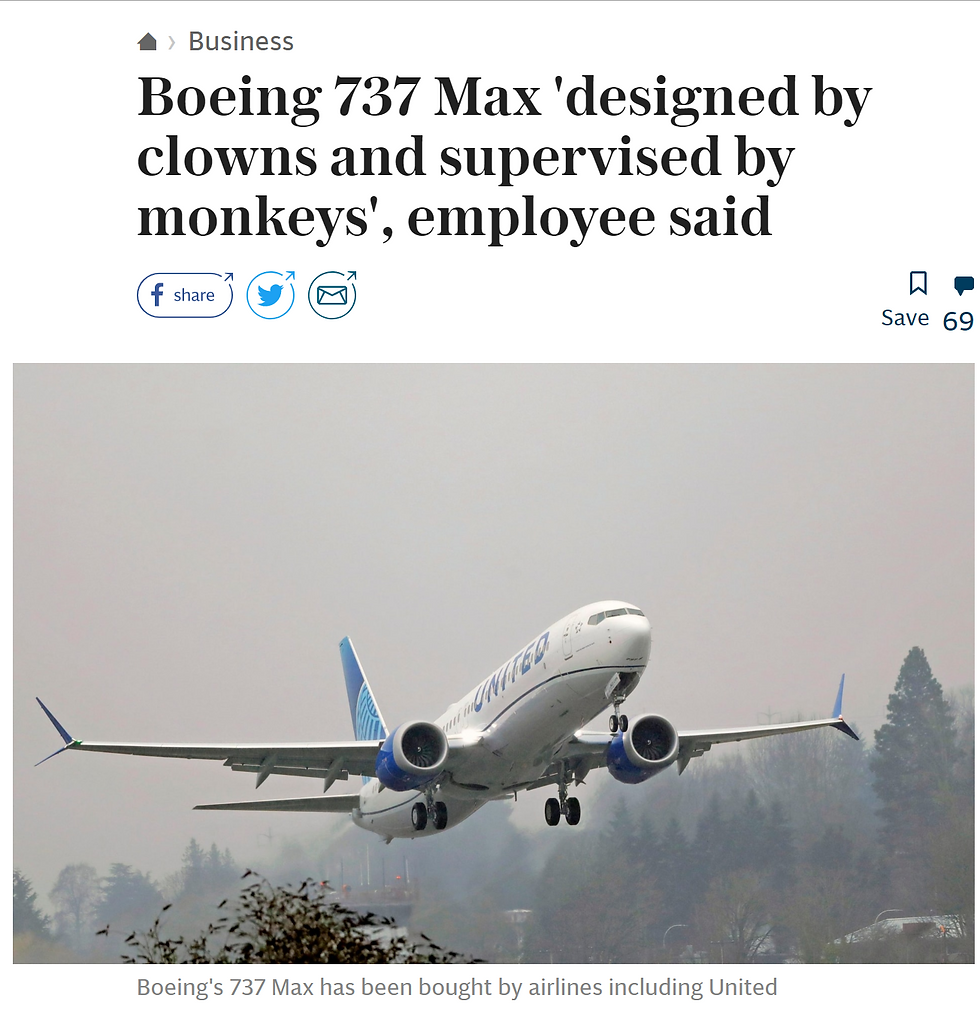Designed by Clowns. Overseen by Monkeys.
- Andrea J. Applegate

- Jan 10, 2020
- 2 min read

It's all over the morning news. As reported in the UK’s Telegraph:
A Boeing employee described the 737 Max as "designed by clowns and supervised by monkeys" in one of hundreds of internal messages released by the embattled plane manufacturer that raise further questions about its operations.
The 737 Max has been grounded since March after two fatal crashes in November 2018 and March 2019 that killed 346 people. US lawmakers have accused the company of a "coordinated effort" to conceal criticism from employees about its simulators.
In April 2017, two employees exchanged instant messages expressing concerns about the Max's flight management computer. One unnamed employee said: "This airplane is designed by clowns who in turn are supervised by monkeys."
Um, yikes. Shocking.
Certainly, the cavalier attitude expressed in this comment, "designed by clowns, supervised by monkeys," is made all the more painful and grotesque knowing the fate of the people killed in these crashes. I’m guessing the macabre statement didn’t sound as cold prior to the accidents. But still.
It’s natural to turn our blame to the employees. How dare they not take their jobs seriously. They work for Boeing, for God’s sake. They build airplanes. They are responsible for people’s lives. This is serious business and they need to be serious every day. Joking is not appropriate.
(As we learned, they would not let their own families fly on these aircraft because they doubted its safety.)
But it’s misplaced to blame the employees. It's an easy out.
It’s really the culture. The culture of the organization made it OK to say these things. The culture of the organization made it OK that the circumstances, the reality, behind the comment could flourish. "It's only funny because it's true." The culture of the organization made it OK that everybody knows something is wrong but nobody speaks up. The culture of the organization makes gallows humor OK. But, for a million reasons, those in a position to speak up and do something are not going to because, in truth, they don't have the power. Or the permission.
And that’s a problem with leadership.
The leadership says the culture of the organization is OK. Or the leadership believes the culture is something that it's not. Or the leadership pretends the culture is one thing knowing full well the culture is something else.
Culture is not a slogan. Culture is not words painted on the walls. Culture is not what we want it to be just because it’s what we want or wish. It’s not what we declare it to be.
Culture is what it is.
If we want our culture to be something that it’s not right now or we want it to be different than what it is today, we need to do the work and be intentional about making that change.
Culture change is strategic. It’s hard. And it takes time. But, do we have a choice?
If everybody in our business knows things are desperately wrong and if none of our employees is willing to speak up in the face of what is wrong, our culture is no good.
For most of our businesses, people don’t die. But still. We can do better.



Comments